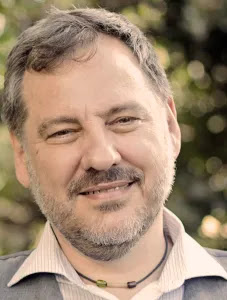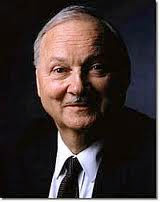Is the Global Pact on Environmental Rights a good idea?
Introduction
The idea of a global pact on environmental rights presented last week at UN is clearly a bold idea and those associated with it should be commended for thinking outside the box. But having looked at what they are proposing I don't think it is the right direction to go and I worry it will absorb a lot of time and effort which could be focused on achieving real change. The proposal would also likely water down present agreements and I cant see the US, China, India and others signing up for it. Which some of them did actually say. Clearly, one thing that needs to happen is that present agreements need to be implemented much better than they are.
There is a very good review of why the pact is perhaps not a good idea in a paper by Susan Binaz called 10 Questions to Ask About the Proposed “Global Pact for the Environment” which you can read here.
There is a very good review of why the pact is perhaps not a good idea in a paper by Susan Binaz called 10 Questions to Ask About the Proposed “Global Pact for the Environment” which you can read here.
So, what is the Pact attempting to address?
One of the critical issues is the fragmentation of the environment among lots of multilateral environmental agreements. This has been a recognized problem for quite a while.
Every issue that moves to international law sets up its own governing body made up of the parties to that convention. It takes away responsibility for the issue in general from UNEP, in turn, this weakens UNEP as the environmental voice every time a new convention has been agreed.
In the late 1990s there was a recognition that the creation of new Multilateral Environmental Agreements (MEAs) was fragmenting the environmental agenda. After all the Rio Earth Summit had added or would add conventions on:
- Climate Change
- Biodiversity
- Desertification
- Persistent Organic Pollutants
- Prior Informed Consent Procedure for Certain Hazardous Chemicals and Pesticides in International Trade
- Not to mention the Straddling Fish Stocks Agreement.
The approach was called 'clustering'. It was very simple bring together all the chemical conventions into a cluster, bring all the land/biodiversity conventions into a cluster, the air/climate ones...you get the idea.
The majority of (MEAs) it should be noted address a common set of cross-cutting issues which include the assessment and management of pollution, education and awareness raising, strengthened scientific base, increased membership, improved partnerships and building the capacity of signatories to meet their implementation obligations. These common functions could be coordinated among conventions covering similar themes
To promote greater coherence between different MEAs the following ideas were suggested for consideration:
- Geographical clustering of the Secretariat of MEAs, so MEAs are located in the
- same location;
- Thematic Clustering of MEAs, so MEAs with a similar mandate are brought
- under a single umbrella body;
- Clustering of the Conference of the Parties, so meetings take place back-to-back;
- Develop Memorandum of Understanding between mutually supportive MEAs.
- sustainable development conventions;
- biodiversity-related conventions;
- chemicals and hazardous wastes conventions; and
- regional seas conventions and related agreements
After WSSD there was not an immediate follow-up until Achim Steiner became Executive Director of UNEP. Very early in his first term of office, there was an agreement to cluster chemicals and hazardous waste. The first simultaneous extraordinary meetings of the Conferences of the Parties to the Basel, Rotterdam and Stockholm conventions were held in Bali, Indonesia from 22 to 24 February 2010. It was held in coordination with the eleventh special session of the UNEP Governing Council/Global Ministerial Environment Forum.
The first step in the clustering of these conventions was on:
- Joint activities:
- Joint managerial functions:
- Joint services;
- Synchronization of budget cycles;
- Joint audits;
- The subsequent meeting of the ‘super COP’ in 2013 opted measures in the areas of:
- Enhanced cooperation and coordination between technical bodies of the three conventions;
- Wider cooperation;
- Transparency and accountability; and
- Facilitating financial resources for chemicals and wastes.
They started to have meetings of all the chemical and hazardous waste conventions into what is known as a super COP (Convention of the Parties) with them meeting either back to back or a merged agenda. This would enable them to address overlaps, gaps, capacity building, funding and science to be looked at as a whole. It enabled a more integrated reporting process. Reducing burdens on governments but at the same time giving a much clear picture of what was happening. It was a very good start.
The larger IEG process was reignited after the World Summit in 2005 with a process looking at upgrading UNEP into an Agency this process again was led by France who had negotiated with US Ambassador John Bolton the text in the World Summit 2005 outcomes:
“169. Recognizing the need for more efficient environmental activities in the United Nations system, with enhanced coordination, improved policy advice and guidance, strengthened scientific knowledge, assessment, and cooperation, better treaty compliance, while respecting the legal autonomy of the treaties, and better integration of environmental activities in the broader sustainable development framework at the operational level, including through capacity building,
we agree to explore the possibility of a more coherent institutional framework to address this need, including a more integrated structure, building on existing institutions and internationally agreed instruments, as well as the treaty bodies and the specialized agencies.”
A process under two Ambassadors (Mexico and Switzerland) were established in New York to look at options. At the UNEP Governing Council in February 2009 South African Minister Marthinus van Schalkwyk underlined the agenda that still needed to be addressed in a speech at the plenary session on International Environmental Governance (IEG) outlined a roadmap on IEG:
"The first milestone will be when we meet in a year from now, in February 2010. At that meeting we should ideally adopt a Ministerial Declaration on the principles and objectives (on IEG) that will guide our further work in the run-up to Rio plus 20."
UNEP Governing Council then set up an adhoc Ministerial process. At the November 2009 meeting in Helsinki, Ministers adopted the ‘six functional objectives framework.’ These objectives were to:
i. Strengthen the science-policy interface
ii. Develop a UN system-wide strategy for the environment
iii. Realize synergies between multilateral environmental agreements
iv. Link global environmental policy making and financing
v. Develop a system-wide capacity-building framework for the environment
vi. Strengthen strategic engagement at the regional level
In July 2011 in the runup to Rio+20 Indonesia hosted an expert meeting on Institutional Framework for Sustainable Development. The UNDESA background paper addressed the issue of fragmentation by suggesting clustering the conventions around these other four areas building on the work already done for chemicals and hazardous waste:
- Biodiversity
- Atmosphere
- Oceans and Fisheries
- Freshwater and Land related conventions. (UNDESA, 2011)
One problem that governments will have to address in the clustering of MEAs is how to proceed when the relevant MEAs are under the umbrella of other UN agencies such as IMO, ILO, UNESCO or FAO.
A couple of options might be considered by governments:
1. Reviewing mandates of UN agencies to consider simplifying areas of common interest
2. Establishing a joint secretariat role between a WEO and another UN agency
3. Changing the secretariat from one UN agency to another.
With the chemicals process underway governments turned their attention to the biodiversity conventions:
- Convention on Biological Diversity;
- International Treaty on Plant Genetic Resources for Food and Agriculture;
- Ramsar Convention;
- Convention on Migratory Species;
- CITES.
At the UNEP GC in 2012 governments recognized the importance of enhancing synergies, they requested the Executive Director to explore the opportunities for further synergies in the administrative functions of the multilateral environmental agreement secretariats administered by UNEP and to provide advice on such opportunities to the governing bodies of those multilateral environmental agreements. In a report produced Elaboration of options for enhancing synergies among biodiversity-related conventions it identified seven areas which could help clustering:
- National biodiversity strategies and action plans, the Strategic Plan for Biodiversity and the Aichi Biodiversity Targets
- Reporting, monitoring and indicators
- Intergovernmental Science-Policy Platform on Biodiversity and Ecosystem Services and strengthening the science-policy interface
- Information management and awareness-raising
- Capacity-building
- Funding and resource efficiency
- Institutional collaboration
Encourage mutually supportive decisions and possible common decisions across the governing bodies of biodiversity-related conventions for achieving coherence at all levels, including further developing and strengthening joint work programmes and memorandums of understanding.
Develop mechanisms to share expertise across the biodiversity-related conventions in order to seek and identify common issues to address, and actions to undertake, at a programmatic and political level, to implement the Strategic Plan for Biodiversity 2011–2020 in a coordinated manner.
There are joint work programmes now in place between some of the conventions. The next step could be the introduction of a super COP perhaps every 4 years.
With two of the areas now either working towards addressing fragmentation is the next step under the new Executive Director of UNEP is to do the same for the cluster of Atmosphere and Oceans?
Scientific Fragmentation
With the establishment of the IPCC and the more recent Intergovernmental Panel of Biodiversity and Ecosystem Services, there is a danger that just as there was fragmentation of the MEAs there may develop fragmentation of the scientific bodies.
There are growing calls for scientific bodies similar to the IPCC and IPBES for chemicals, oceans and seas and desertification. Governments might want to consider strategies for considering this.
One option could be an over-arching Intergovernmental Panel on Sustainable Development under which present panels and any future panels would sit.
Such an Intergovernmental Panel on Sustainable Development should report to the both the High-Level Political Forum but perhaps more importantly UNEA.
UNEP
As has been said in this blog has been that every time UNEP is successful in initiating another legally binding agreement it diminishes UNEP as the voice for the environment.
The world needs a strong UNEP and so the clustered conventions should come into a new relationship with UNEP. Some thoughts on this might include:
The Executive Director of UNEP chairing a committee of heads of the conventions which can address interlinkage, overlaps, and gap.
A paper relating to the state of affairs of the conventions should be an agenda item for all UNEAs. This used to be true for the Commission on Sustainable Development from 1994-1997 then ceased to happen. The paper would address interlinkages, overlaps, and gaps and where appropriate recommend policy options.
UNEP Chief scientist would chair a regular meeting of the chairs and executive directors of the scientific bodies of the conventions
A final thought
It isn’t as sexy to say this but it is fundamental to the success of any of the MEAs or other environmental agreements and that is they need to be implemented. Governments no longer have the luxury to sign up to agreements they do not intend to implement. The 1990s and the 2000s have been a bit like a bad party and now the world has to sort out the mess left by it.A good place to start is to have actually implemented what has been agreed.







Comments
Post a Comment